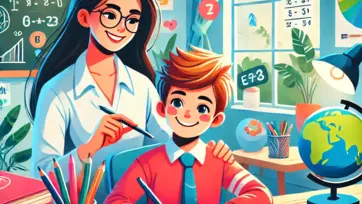Early childhood education (ECE) plays a crucial role in shaping a child's cognitive, social, and emotional development. The foundational years, typically from birth to age eight, are a critical period for learning, brain development, and skill-building. Investing in early education helps children establish a strong base for lifelong success. Here’s why early childhood education is essential for your child’s future.
1. Builds Strong Cognitive Skills
Research shows that young children’s brains develop rapidly during the first few years of life. Exposure to structured learning experiences enhances cognitive functions such as problem-solving, memory, and attention.
Benefits of Early Cognitive Development:
- Encourages curiosity and creativity.
- Develops language and communication skills.
- Improves memory retention and critical thinking abilities.
2. Enhances Social and Emotional Development
Interacting with teachers and peers in an early education setting teaches children important social skills.
Key Social and Emotional Benefits:
- Helps children learn teamwork, cooperation, and sharing.
- Builds self-confidence and independence.
- Teaches emotional regulation and conflict resolution.
3. Prepares for Academic Success
Children who participate in early education programs perform better academically in later years.
How ECE Prepares Kids for School:
- Introduces early literacy and numeracy concepts.
- Develops strong learning habits and discipline.
- Reduces the likelihood of falling behind in school.
4. Encourages a Love for Learning
Positive early learning experiences make education enjoyable and instill a lifelong passion for learning.
Ways ECE Fosters Love for Learning:
- Uses interactive and play-based learning.
- Encourages hands-on exploration and discovery.
- Creates a safe and engaging environment for curiosity.
5. Strengthens Language and Communication Skills
Early education promotes strong language skills, helping children become effective communicators.
How ECE Enhances Communication:
- Expands vocabulary through storytelling and conversations.
- Encourages self-expression and active listening.
- Develops multilingual skills in bilingual programs.
6. Supports Physical Development
Physical activity is an integral part of early childhood education, supporting fine and gross motor skills.
Ways ECE Promotes Physical Growth:
- Encourages active play, running, jumping, and climbing.
- Improves hand-eye coordination through arts and crafts.
- Teaches basic health and hygiene practices.
7. Helps Identify and Support Special Needs
Early education settings can detect learning disabilities or developmental delays early, ensuring timely intervention.
Benefits of Early Intervention:
- Provides individualized support to children with special needs.
- Helps families access resources and professional guidance.
- Improves long-term educational outcomes for children.
8. Promotes Independence and Responsibility
Children in early education programs learn to take responsibility for their actions and develop self-sufficiency.
How ECE Encourages Independence:
- Teaches personal responsibility, such as cleaning up after activities.
- Encourages problem-solving and decision-making.
- Provides structured routines that build confidence.
9. Reduces the Achievement Gap
High-quality early education helps bridge the learning gap between children from different socioeconomic backgrounds.
How ECE Supports Equal Opportunities:
- Ensures all children have access to quality learning experiences.
- Provides a head start in academic and social skills.
- Helps level the playing field for future success.
10. Prepares Children for Future Challenges
Children who attend early education programs develop resilience and adaptability, essential for future challenges.
How ECE Builds Resilience:
- Teaches coping strategies for difficult situations.
- Encourages perseverance and problem-solving.
- Builds a strong foundation for lifelong emotional well-being.
Conclusion
Early childhood education is a vital investment in your child’s future. By nurturing cognitive, social, emotional, and physical development, ECE equips children with the skills needed for academic success and lifelong learning. Enrolling your child in a quality early education program ensures they receive the best possible start, setting them up for a bright and successful future.








